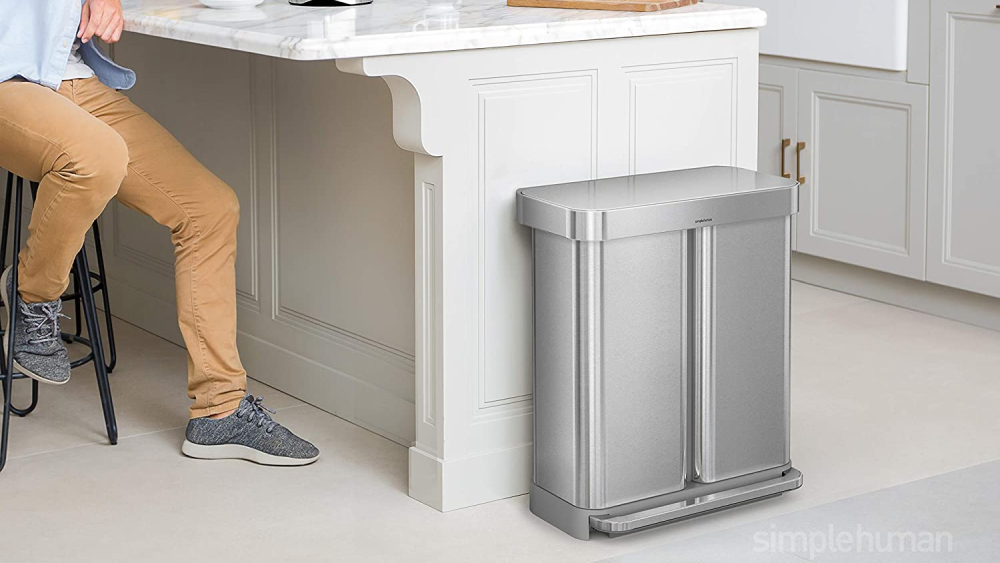Issue 122. May 2, 2025 ✨ Higher Power Coaching & Consulting ✨

Perhaps some of these snippets will resonate with you:
- You’ve had free family furniture you don’t even like in your home for years.
- You wear socks you don’t like because they’re the kind you’ve always worn.
- You have a garbage can that drives you crazy every time you use it, but you keep on using it anyway.
One of the really interesting aspects of 12-step recovery is that we start noticing things like this. We realize we don’t have to live like that anymore. We get to purposefully occupy our homes, clothe our bodies in styles that feel good, and fill our spaces with things that nurture us, not things that annoy us every time we interact with them.
A sponsee of mine shared that he got rid of the free family furniture he had dragged around for years. In doing so, he also let go of the emotional legacy that furniture carried — a legacy of trauma and dysfunction passed down through generations.
One of his first new purchases was a garbage can. That may not sound profound, but it was a significant shift for him. He loves beautiful surroundings but has internalized the belief that he doesn’t deserve them. He grew up with the bare minimum.
After admiring a friend’s stylish garbage can, he decided to invest in one himself. I use the word “invest” intentionally. His new can cost about $90, which he questioned at first. But when we talked it through, we realized even if it only lasted 10 years, it would cost just $9 per year — about 75 cents a month, or 2.5 cents a day. A small investment for something that made his environment more pleasant and reflected his worth.
When we intentionally bring things into our lives that we love, we get used to being surrounded by what brings us joy. We raise the bar for what “normal” looks like in our homes and our lives.
I have my own garbage can story, too.
For years, I had a 13-gallon garbage can in my kitchen. I liked it because it meant I didn’t have to take the trash out often. Somewhere along the line, I had internalized the idea that I was lazy. Somehow, having a large garbage can that only needed to be emptied infrequently served as evidence that I was, in fact, lazy. As I grew further in my recovery, I started questioning ideas like that. Am I really lazy? The truth is, I’m not. I get a lot done. Anyone who knows me would say so. That old belief wasn’t true.
One day, I noticed a friend’s small garbage can under their sink. It got me thinking that maybe I could have a smaller one, too. But then I remembered I still had a giant box of 13-gallon trash bags. My rigid thinking kicked in: “I have to use them up before getting a new can.”
Then something unexpected happened. I was emptying my sweetheart’s little garbage can and realized — he used a giant bag in his tiny can! That completely blew my mind. I didn’t have to match the bag size to the can size? Seriously??
That realization led to a big shift. I now have a medium-sized garbage can, using up my large bags. The old, large garbage can is now in my bedroom. And while I was rearranging, I realized I could finally get rid of the dish rack that had been under the sink for years — the one that had annoyed me every single time I opened the cabinet. That meant I could put the new, medium-sized garbage can under the sink so it wouldn’t be out in the open kitchen.
All of this was a powerful example of black-and-white thinking: believing things had to be one way or another, right or wrong. People in recovery often struggle with rigid thinking patterns. Over time, as we heal, we see more and more places in our lives where we had unconscious rules that no longer serve us.
These stories — about furniture, about garbage cans, about old socks — also show something deeper. When you come from dysfunction, you often accept discomfort as normal. You might not turn up the heat, you might keep garbage cans that frustrate you, you might wear clothes you hate.
But you don’t have to live like that anymore.
You get to be comfortable in your own home.
You get to be comfortable in your own body.
You get to be comfortable in your own life.
I think about recovery like this:
- First, you get rid of the boulders: the big, obvious problems.
- Then you get rid of the rocks: the medium ones.
- Then the gravel: smaller but still noticeable.
- Eventually, you’re working with grains of sand. The tiniest patterns that are harder to detect, but still worth clearing out.
That’s the beauty of sharing stories like these. They remind us we’re not alone. They remind us that what feels “crazy” often comes from somewhere. And they show that real change happens in the small moments, the tiny decisions.
If you have your own black-and-white thinking story, I would love to hear it. Feel free to send me an email.
Find this helpful? Share with a friend:
Like what you've read and heard?
Try subscribing to my monthly newsletter, "Happy, Joyous and Free."
It will help you change your dysfunctional patterns of behavior.
Want to chat with me about your boundaries? Hop onto my calendar here for a free 30-minute Better Boundaries call.
